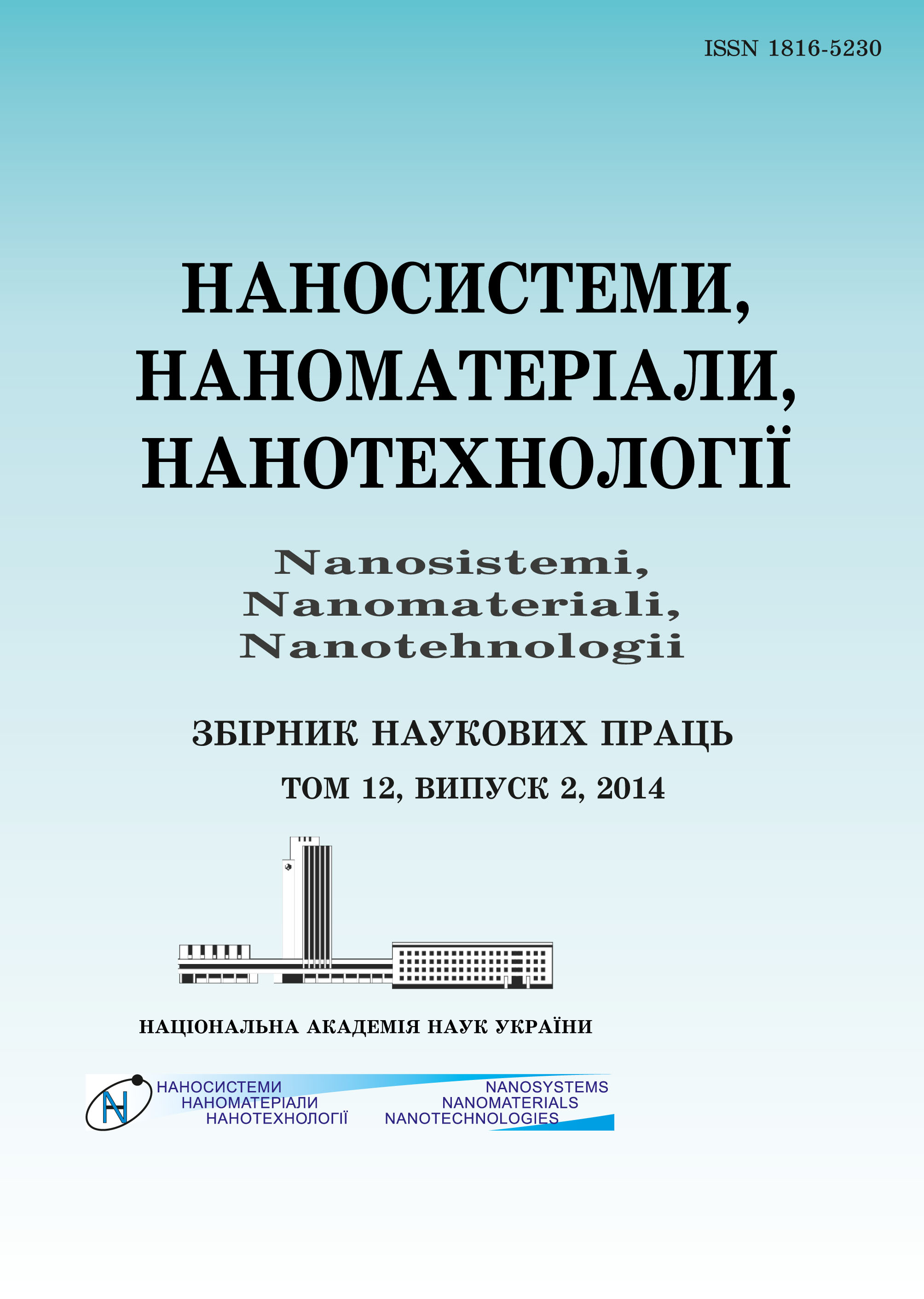|
|
|||||||||
 |
Year 2017, Volume 15, Issue 2 |
|
|||||||
|
|||||||||
Выпуски/2017/том 15 /выпуск 2 |
L. P. Steblenko, V. V. Trachevsky, A. K. Melnyk, A. M. Kuryliuk, O. M. Krit, S. M. Naumenko, Yu. L. Kobzar, І. V. Yurgelevych, S. G. Rozuvan, P. A. Teselko
«The Change of Nanostructure and Microplastic Characteristics of the Silicon Crystals Under the Impact of Strong Magnetic Fields»
221–233 (2017)
PACS numbers: 61.72.Ff, 61.72.Hh, 61.72.Lk, 66.30.Lw, 78.67.Bf, 81.40.Lm, 83.60.Np
In this paper, the influences of strong magnetic fields (B?=?9.4 Tl) on the nanostructure and the microplasticity of silicon crystal are studied. Revealed magnetostimulated effects show dependence between the evolution of nanostructure and the type of dopant impurities (phosphorus, boron). As found, the strong magnetic fields lead to different changes in nanostructure of Si crystal of the n- and p-type conductivity. As shown, the strong magnetic fields cause long-term structural relaxation processes, which effect on the changes of microplastic characteristics. As established, the dependence between the mobility of dislocations and the impurity, which determines the origin of microplasticity in silicon (namely, oxygen), is identical in Si crystals with different types of conductivity.
Key words: silicon, magnetic field, dislocations, nanostructures, microplasticity.
https://doi.org/10.15407/nnn.15.02.0221
REFERENCES
1. O. Koplak, R. Morgunov, and A. Buchachenko, Chem. Phys. Lett., 560: 29 (2013).
https://doi.org/10.1016/j.cplett.2013.01.003
2. O. Koplak, A. Dmitriev, T. Kakeshita, and R. Morgunov, J. Appl. Phys., 110: 044905 (2011).
https://doi.org/10.1063/1.3625242
3. M. N. Levin, A. V. Tatarintsev, O. A. Kostsova, and A. M. Kostsov, Zh. Tekh. Fiz., 73, No. 10: 85 (2003) (in Russian).
4. M. N. Levin and B. A. Zon, Zh. Eksp. Teor. Fiz., 111, No. 4: 1373 (1997) (in Russian).
5. V. N. Buzyikin, O. I. Datsko, and S. N. Postnikov, Elektron. Obrab. Mater., No. 2: 16 (1993) (in Russian).
6. Ya. B. Zel'dovich, A. L. Buchachenko, and E. L. Frankevich, Usp. Fiz. Nauk, 155, No. 1: 3 (1988) (in Russian).
https://doi.org/10.3367/UFNr.0155.198805a.0003
7. O. V. Koplak, R. B. Morgunov, and A. L. Buchachenko, J. Exp. Theor. Phys. Lett., 96, No. 2: 107 (2012) (in Russian).
https://doi.org/10.1134/S002136401214007X
8. V. A. Makara, L. P. Steblenko, I. V. Plyushchay, A. N. Kuryliuk, D. V. Kalinichenko, A. N. Krit, and S. N. Naumenko, Fiz. Tverd. Tela, 56, No. 8: 1531 (2014) (in Russian).
9. A. L. Buchachenko, JETP, 132, No. 3: 673 (2007) (in Russian).
10. A. B. Roytsyn and V. M. Maevskiy, Usp. Fiz. Nauk, 159, No. 2: 297 (1998) (in Russian).
|
©2003—2021 NANOSISTEMI, NANOMATERIALI, NANOTEHNOLOGII G. V. Kurdyumov Institute for Metal Physics of the National Academy of Sciences of Ukraine.
E-mail: tatar@imp.kiev.ua Phones and address of the editorial office About the collection User agreement |